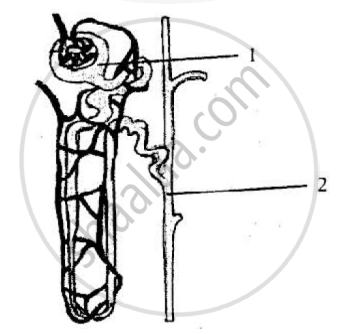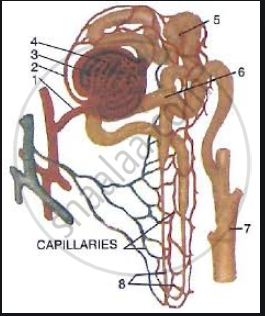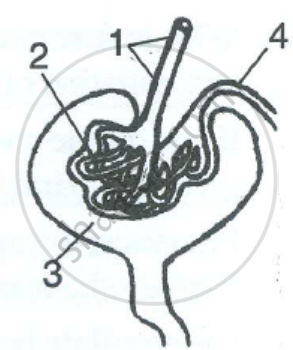Advertisements
Advertisements
प्रश्न
Draw a labeled diagram of the human kidney as seen in a longitudinal section.
उत्तर

APPEARS IN
संबंधित प्रश्न
The diagram given below is that of a structure present in a human kidney.
Study the same and answer the questions that follow:

1) Name the structure represented in the diagram
2) What is the liquid entering part ‘1’ called?
Name two substances present in this liquid that are reabsorbed in the tubule.
3) What is the fluid that comes to part ‘2’ called?
Name the main nitrogenous waste in it.
4) Mention the three main steps involved in the formation of the fluid mentioned in (iii) above
5) Name the substance which may be present in the fluid in part ‘2’ if a person suffers from Diabetes mellitus.
If you donate one kidney to a needy patient, would it cause any harm to you? Give reason.
Define the following term:
Micturition
Label the diagram given below :

The following diagram represents a mammalian kidney tubule (nephron) and its blood supply.

Parts indicated by the guidelines 1to 8 are as follows:
1. Afferent arteriole from renal artery
2. Efferent arteriole
3. Bowman's capsule
4. Glomerulus
5. Proximal convoluted tubule with blood capillaries
6. Distal convoluted tubule with blood capillaries
7. Collecting tubule
8. U-shaped loop of Henle
Study the diagram and answer the question that follow:
Which structure contains the highest concentration of urea?
Study the diagram given alongside and then answer the question that follow:

What is the technical term given to the process occurring in 2 and 3? Briefly describe the process.
Choose the correct option.
Deproteinised plasma is not found in ______.
Osmoregulation maintains the osmolarity of blood at about ______.
The mode of excretion of nitrogenous wastes like ammonia which takes place by simple diffusion is called ______.
Two green plants are kept separately in oxygen-free containers, one in the dark and the other in continuous light. Which one will live longer? Give reasons.
